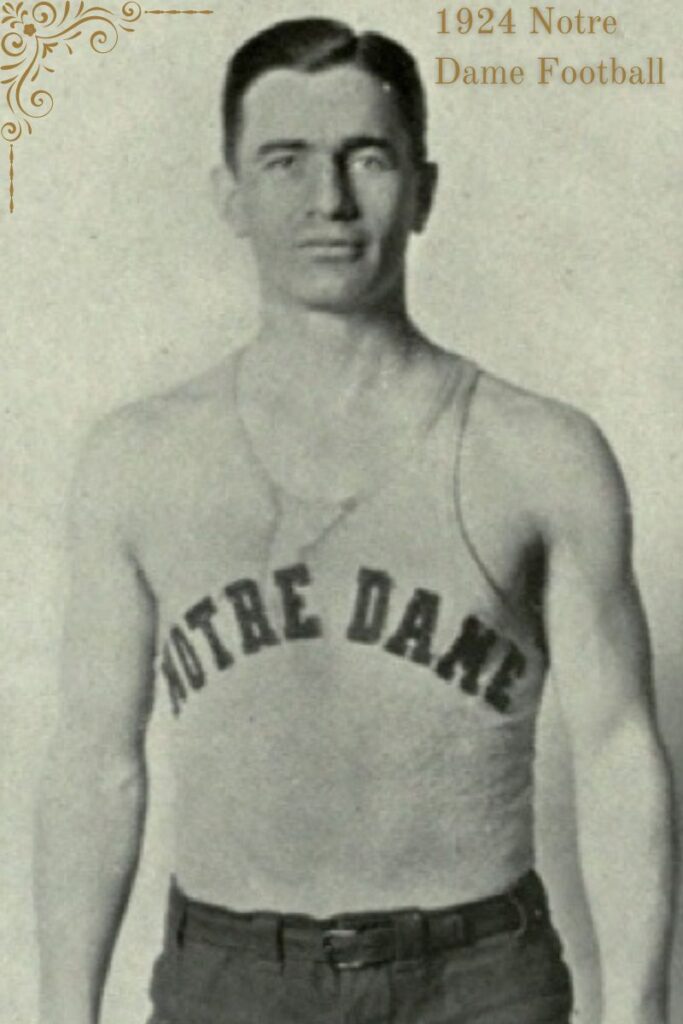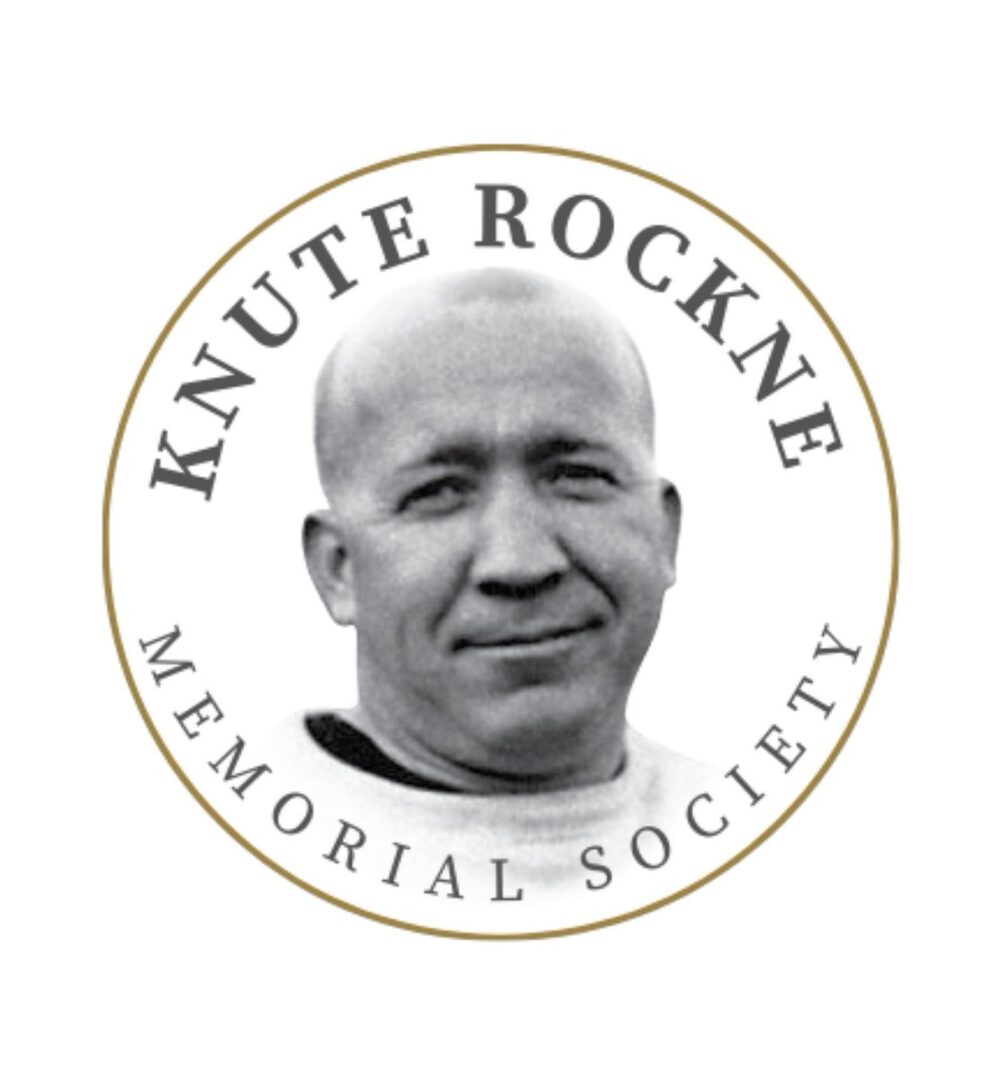
Noble Kizer
Right Guard
Plymouth, IN
From an early age, Indiana native Noble Kizer exhibited a skill for athletic leadership.
As a student at Plymouth, Ind., High School in the 1910s, he helped organize and coach the school’s basketball and track and field teams, starring in both sports.
The school did not have a football team—making it all the more remarkable that Kizer ended up as a regular on one of Notre Dame’s most famous football teams, the 1924 national champions.
Kizer dropped out of high school in 1918 to join the U. S. Marine Corps during the height of World War I, and was sent to Quantico, Virginia, for training. After the Armistice was signed on Nov. 11, 1918, Kizer returned to Plymouth, and he graduated high school in 1919.
He eventually made his way 25 miles north and began working at the South Bend YMCA to earn money for college. There, Knute Rockne saw him working out and was impressed enough to ask Kizer to enroll at Notre Dame and come out for football. At 5-foot-8, 165 pounds, he was the mirror image of Rockne. But while Rockne had played end at Notre Dame from 1910-13, Kizer became one of Rockne’s “watch-charm guards”—smaller stature fellows who used quickness, leverage, and guile to lead interference for the Irish backs.
Kizer split time at right guard with the bigger George Vergara (6-1, 187) in 1923, his junior year. Vergara was expected back in 1924, but when it was found out that he played one half of one game for Fordham three years earlier before coming to South Bend from the Bronx, he was declared ineligible. Vergara spent the 1924 season as an assistant coach, leaving Kizer to become the regular at the position.
Thus, it’s Kizer who became famous as one of the Seven Mules blocking for the Four Horsemen in 1924. The team went undefeated, and became the first football team to play in New York City, Chicago, and southern California in the same season, defeating Stanford in the January 1, 1925 Rose Bowl, 27-10, to complete a perfect season.
Kizer, staying true to his Indiana roots, was also a standout on the Irish basketball team, under head coach George Keogan, and was elected captain of the 1924-25 squad.
In a 1922 football game at Georgia Tech, Kizer is said to have foreshadowed future Irish head coach Gerry Faust, encouraging his teammates to say a Hail Mary on the sideline as Notre Dame strove for a late victory. Years later, the practice was linked to attempting a lengthy last-minute forward pass, entering football vernacular forever.
The Four Horsemen and Seven Mules were all seniors in the fall of 1924—and all 11 of them were college football coaches in the fall of 1925, testament to the preparation Rockne imparted, and the respect other colleges had for Rockne’s success and system. Kizer was able to stay in his home state of Indiana, landing the job as line coach for Purdue under former Irish quarterback, Boilermaker head coach James Phelan.
For five seasons (1925-29), Kizer guided the Boilermakers line; when Phelan took the University of Washington job in 1930, Purdue made Kizer its head coach.
For seven seasons (1930-36), Kizer had the Boilers humming. He guided them to Big 10 championships in 1931 (5-1; 9-1 overall) and 1932 (5-0-1; 7-0-1 overall). His .750 winning percentage (42-13-3) remains the highest for any Purdue coach who led the team for more than two seasons. Only Joe Tiller and Jack Mollenkopf have won more games, both with many more seasons than Kizer.
Among his honors, Kizer was selected by a nationwide vote of football fans as the first coach of the College All-Star team in its annual meeting with the professional football champions in 1934.
As Purdue coach, Kizer twice faced his alma mater. In 1933, he guided the Boilers to a 19-0 victory at Notre Dame Stadium, one of five losses for the Irish in Hunk Anderson’s final season as head coach. The following season, in a battle with 1924 teammate and ex-Horseman Elmer Layden, Notre Dame prevailed, 18-7, giving Layden his first victory as Irish head coach.
Illness forced Kizer to give up football coaching duties in 1937. Kizer served as Purdue’s athletic director from 1933 until June 13, 1940, when he died at age 40 of a kidney ailment and high blood pressure.
As athletic director, Kizer had traveled the state extensively, helping high schools without football to start programs and encouraging the overall advancement of the sport. He was inducted into the Indiana Football Hall of Fame posthumously in 1977, and to the Purdue Athletic Hall of Fame in 1998.
Boilermaker fans were left to wonder what might have been had not poor health shortened Kizer’s coaching career. And Irish fans remember and celebrate a true home-state hero.
Donate
Support the work of the Knute Rockne Memorial Society with a tax-deductible donation today.
Subscribe
Join our email list to receive the latest news and posts from the Knute Rockne Memorial Society.
